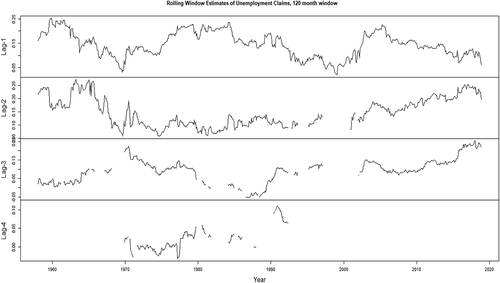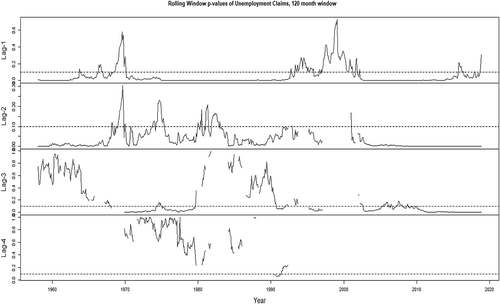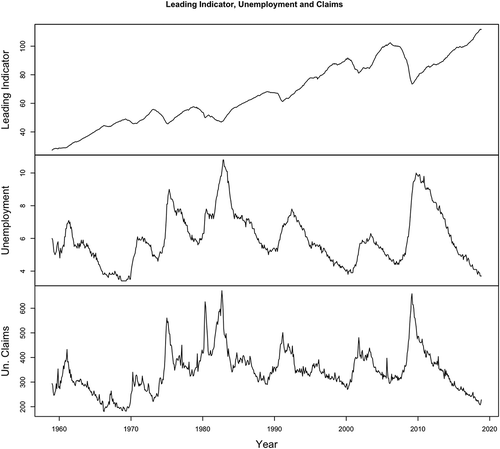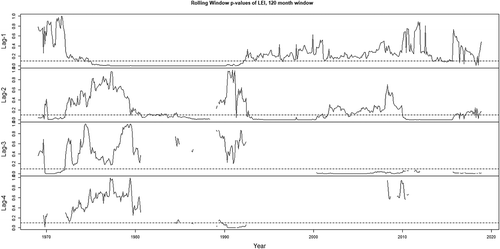Figures & data
Figure 2. Coefficient estimates, 120-month rolling window, VAR(AIC) model, composite leading indicator

Figure 4. Coefficient estimates, 120-month rolling window, VAR(AIC) model, weekly unemployment claims

Figure 5. P-values of coefficient estimates, 120-month rolling window, VAR(AIC) model, weekly unemployment claims.

Table 1. Autometrics analysis of levels of real GDP data
Table 2. Autometrics analysis of levels real GDP data, LEI included
Table 3a. Autometrics analysis of levels unemployment (U) data, LEI and weekly unemployment claims included, 1994–2018
Table 3b. Autometrics analysis of levels unemployment (U) data, LEI and weekly unemployment claims included, 1959–2018
Table 4. Performance summary for models for levels of unemployment data, with and without explanatory variables and indicators, 1959–2018
Table 5. Forecasting performance comparison, US unemployment rate


